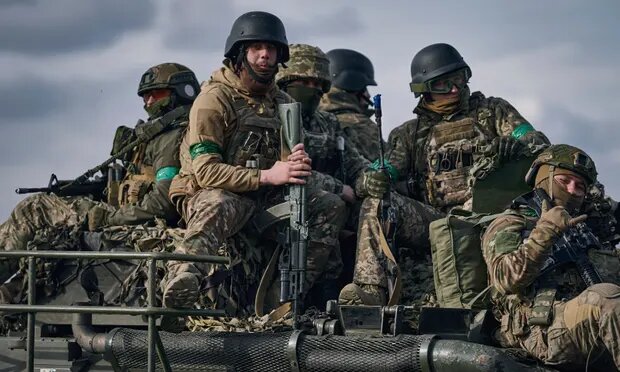Just a few days after dozens of secret Pentagon papers about the war between Russia and Ukraine were leaked on social media, Kyiv changed some of its military plans.
Some Ukrainian officials were quoted in the news story as saying that the leaked documents “contained fake information and looked like a Russian disinformation campaign. Pentagon officials have said the papers are real, but that some parts of them seem to have been changed.
“Pentagon deputy press secretary Sabrina Singh wouldn’t say if the documents were real or not, but she did say in a statement that the Defense Department is “aware of the reports of social media posts, and the Department is looking into the matter,”” a news source said.
Some of the papers are as old as six weeks, and they give a detailed look at the ongoing war between Russia and Ukraine. They talk about the fight of Bakhmut, the deaths on both sides, the delivery of weapons, and the military strategy. They also show that the US has been spying on Ukraine, Israel, and South Korea, in addition to Russia.
What have the leaked documents revealed about the Russia-Ukraine war?
*Ukraine’s air defence at risk: Kyiv is currently using S-300 and Bulk air defense weapons from the Soviet Union to fight Russia’s air force. But the leaked papers show that the country would run out of them by mid-April or May if it doesn’t get a huge amount of weapons.
According to papers seen by the New York Times, Ukrainian air defenses meant to protect troops on the front line, where most of Russia’s air power is centered, will be “completely reduced” by May 23. This could help Russia win the war. Without air defenses, Russia could use its fighter jets and bombs to change the course of the battle in its favor.
*Ukraine narrowly escaped defeat in the battle of Bakhmut: The leaked papers show that at the end of February this year, Russian forces almost surrounded the Ukrainian military in the town of Bakhmut, which has been the site of fierce fighting for months. The head of Ukraine’s military intelligence called the situation “catastrophic.” However, a senior Ukrainian military official said that the soldiers’ morale was low at the time because they didn’t have enough weapons to fight.
In the end, Ukrainian forces were able to push the Russians back with the help of special units. However, “it came at a strategic cost for Ukraine, which has been trying to keep its best trained and equipped soldiers for a counteroffensive expected in the coming weeks or months,” said the New York Times.
*Hesitance of Israel and South Korea to help Ukraine: The papers also gave information about the US’s allies, who are still not sure if they should give arms to Kyiv. When South Korea sent howitzer shells to the US to help them restock, they were afraid that the US would send the weapons to Ukraine. NYT said that the leaders of the Asian country were “torn between Washington’s pressure on Seoul to help supply ammunition to Ukraine and its official policy of not giving lethal weapons to countries at war.”
In the same way, Israel said it didn’t want to send its weapons to Kyiv. Even though the country is helping Ukraine build a smart, custom-made early warning system, it has not given Ukraine any weapons that can kill. But this could change soon, because the leaked papers say that Israel could send lethal defense systems to Ukraine through third parties in the coming months.
*Bonus pay to destroy tanks: The Russian military has started giving money to its troops as a way to keep them motivated and boost their morale. The documents said, “Financial incentives would be given for capturing and destroying foreign tanks, and videos of tanks being destroyed would be widely shared to lower Ukraine’s and the West’s confidence and reassure Russian troops that they could handle this new weaponry.”
*Rise of the Wagner Group: The Wagner Group was also mentioned in the papers. It is said to be owned by Yevgeny Prigozhin, who is a close friend of Russian President Vladimir Putin. Pentagon says that the armed group is trying to stop American operations in Africa and steal weapons from an American outpost in Mali.
